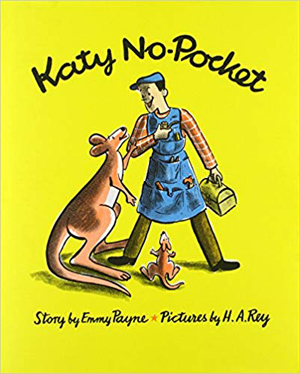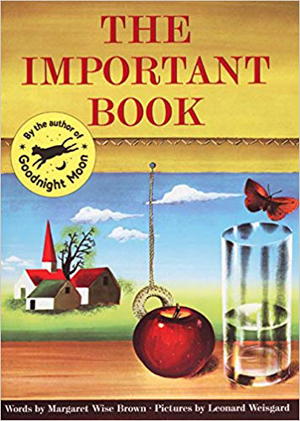
My family marks the anniversary of the passing of my mother-in-law each December. She was a brilliant, down-to-earth and fun-loving human being, and one of the greatest gifts she imparted to her children and grandchildren was a love of reading and languages (she was conversant in an over-achieving five herself, including de rigueur Catholic schoolgirl Latin).
She raised seven children (first child born in 1949, last born in 1964); they were a bookish brood, and after she died, her surviving sons and daughters had the sorrowful, but I expect ultimately joyful, task of divvying up the many picture books accumulated in their home over the decades-long span of their childhood. I am so grateful for the treasured titles my Matt, her youngest son, brought back to our family in Seattle; these precious stories anchor our legacy family bookshelf and encouraged our own two children to love reading and reveling in the cleverness of language and the beauty of brilliant illustration.
Here are just a few of these cherished books — note that many of them are perhaps lesser-known works by famous children’s book authors and illustrators you will already know and love. (And, you can thank me now for not including details about the sometimes gruesome but morally instructive volumes Sixty Saints for Girls and Sixty Saints for Boys in the bargain; please, find other ways to teach your kids that they won’t always be popular by doing the right thing. Death by lion seems so extreme, even by today’s standards.)
 Katy No-Pocket
Katy No-Pocket
Story by Emmy Payne, pictures by H.A. Rey (of “Curious George” fame)
Katy Kangaroo has a big problem and it is breaking her big heart! She has no pocket in which to tote her little boy, Freddie. Talk about a crushing inferiority complex! A mother kangaroo with no pocket? I can't even begin to suggest a correspondingly crippling parenting fail for humans living in the 2020s. After quizzing other animal parents about how they carry their young, to no practical avail, Katy appeals to the wise, if crotchety, owl for counsel, and he sends her off to the big city, where she meets a kind man who helps solve her problem.
Lentil
By Robert McCloskey, of “Make Way for Ducklings” and “Blueberries for Sal” (Kuplink, kuplank, kuplunk!) repute
Young Lentil of Alton, Ohio, has a pretty happy life, with one exception — he wants to sing, but he can’t, no matter how hard he tries. (One might suggest being named after a legume isn’t an ideal setup for a contented childhood, but I digress ...) The poor lad can’t even manage a proper pucker to whistle! The musically parched Lentil saves up his pennies (the year is 1940, friends) to buy himself a harmonica, and applies himself to becoming an expert player. When the small town’s irredeemably bitter grouch, Old Sneep, tries to derail a hero’s homecoming celebration, Lentil and his harmonica save the day.
Bennett Cerf’s Book of Laughs
By Bennett Cerf, drawings by Carl Rose
Our hero Marvin is a bit of a miscreant, be warned. The book is a daisy-chain compilation of non-linear setups for bad puns and situational humor à la Marvin. It’s not really funny, but the book is surprisingly droll to young children. Ex: Marvin’s teacher asks him where we find elephants, and Marvin quips: “We do not have to find elephants. They are so big, they never get lost.” (You kind of need to see the pictures.) Dumb, you say? Sure, but our kids cuh-racked up every time we read it. I think the appeal must be the delight that comes from decoding the humor in playful language. And, yes, every kid loves a butthead, and Marvin is a total butthead.
The Summerfolk
Story and illustrations by Doris Burn
Here’s something I didn’t know all the years I read this meticulously and preciously illustrated book to my kids (gee, thanks, Wikipedia!): Doris Burn is a Northwest treasure; born in Portland and raised in Anacortes, she lived out her adult life on Waldron Island in the San Juans. This charming book details the attitude-altering adventure of a local “island” boy named Willy and a “summerfolk” (“Thick as sand fleas and twice as pesky...”) — that is, a city kid, named Fedderly, who is visiting the island for summer vacation. Their bridge to mutual appreciation builds over an action-packed day featuring a flotilla of boats, an impromptu brunch served on a mat of woven reeds, a sing-a-long about chortling muskrats and snorkeling turtles, a visit to a deep-woods canopy replete with trapezes, tree houses, climbing vines, swings and bouncing nets, and plenty of yodeling and whooping. Then there’s a stubbed toe. And “The Story of the Purple Glob.” And, finally, a “lupper” (the meal between lunch and supper, naturally) of deviled eggs and pickled pigs’ feet. I won’t bother to make an ultra-bright editorial comment with respect to any underlying message about overcoming social class prejudices. What I adore about this book is that it reminds me of the totally free-range childhood I experienced growing up in Colorado (though this story is thankfully BB-gun-free).
We Were Tired of Living in a House
Story by Liesel Moak Skorpen, pictures by Doris Burn (here she is again!)
What kid hasn’t considered decamping from home, at least once? Parents, a roof overhead and other comforts of domesticity are entirely overrated, right? The four siblings in this story (and their cat and dog) decide they have had enough of their parents’ two-bit discipline and pack up their belongings, leaving home to seek refuge in various ultimately unsuitable and inclement environs — a tree, a pond, a cave (spoiler alert: bears!), the sea — before returning home. The detailed illustrations are amazing and worth the price of admission alone.
 Giant John
Giant John
Story and pictures by Arnold Lobel (of “Frog and Toad” fame)
Scene: Enchanted forest. Protagonist: A gentle giant named John who likes getting jiggy to the magic dancing music of neighboring fairies. Hero’s struggle: He and his mother, Mrs. Giant, are poor (with only two potato chips left to eat in the cupboard — this detail was so keenly observed by my kids! Only two potato chips?!), so he seeks a day job at a nearby castle serving a king, queen, princess and dog. He does laundry! He manages climate control! He cleans and dusts! He plays horsey with the dog and princess! Happy ending: The story concludes on a cheery note with a delicious and restorative meal of baked beans for all. Job well done, John! If nothing else, this story is a good reminder that there is one thing we can all agree on: baked beans.
Sam and the Firefly
By P.D. Eastman, protégé and colleague of Dr. Seuss
Nocturnal creatures are the Maytag repairmen of the night watch. Sam, a clearly principled owl on his typical lonely-boy late shift, literally bumps into Gus, a totally uncoachable firefly. Gus delights in capering about with his neon bum, writing words in the night sky (he’s a surprisingly good speller for a beetle). Gus’ showing off is all fun and games until he causes a car smash-up at an intersection, an air traffic control disaster and a hot dog stand sign rewrite that is Just. A. Bridge. Too far! An instructive lesson in how to deal with a trouble-making, but ultimately lovable, friend.
The Tomten
Adapted by Astrid Lindgren (of “Pippi Longstocking” fame) from a poem by Viktor Rydberg, illustrated by Harald Wiberg
In the dead of a frigid night on an isolated farm in the middle of a Swedish forest, the Tomten — a wizened, gnome-like sprite — emerges from the corner of the hayloft where he lives to check in on the welfare of the livestock. No human has ever laid eyes on the Tomten, but they know he has been there when they see the tiny footprints he leaves in the snow as he makes his rounds to tend to the comfort of the animals, soothing them in tomten language, a silent little language that the cows, horse, sheep, chickens, dog and cat can understand. The full-color paintings in this enchanting book sweetly evoke the frosty hush of night in a wintry countryside, and elements of the source poem provide a wave-like rhythmic structure to the story, creating a lulling, sleep-inducing sense of peacefulness.
May I Bring a Friend?
By Beatrice Schenk de Regniers, illustrated by Beni Montresor
Italian artist, opera and film director, and set designer Beni Montresor quite deservedly scooped up a Caldecott Medal for the incredibly vivid illustrations (think Maurice Sendak illustration style + “Sgt. Pepper Lonely Hearts Club Band” cover aesthetic) in this ultracharming book about a lucky little boy who gets invited to have tea with the King and Queen. Delighted, of course, but “May I bring a friend?” he asks. Though the friend he brings is not at all what they expected, the King and Queen keep extending their invitation for the boy’s return, the next day and the next and the next … With friends like his, who needs a zoo?
Anatole
By Eve Titus, pictures by Paul Galdone
It would take an awful lot for me to flip on my fearful repugnance (read: phobia) of rodents, but if there is anything that has come even close to changing my mind, it is the “Anatole” series by Eve Titus. The title character is a mouse with a lion-size conscience and work ethic. Anatole is a modest, but très chic, French-mouse who has a dear wife, Doucette, and six charming children, and they live in a mouse village near Paris. At night, Anatole and his faithful ami Gaston (an adorably insouciant Gallic stereotype, in rodent form) bicycle out to gather food for their families. When Anatole overhears a human couple complaining about mice (“To be a mouse is to be a villain!”), he pledges to change his freeloading forager ways and make himself useful to his human benefactors in a unique, mousy way. Relish, as I did, the opportunity to layer on a dramatic French accent as you read this. Voilà! Magnifique! N’est-ce-pas?
Mister Dog: The Dog Who Belonged to Himself
By Margaret Wise Brown (“Goodnight Moon,” “The Runaway Bunny”), illustrated by Garth Williams (famed “Illustrator of the Century” of such indelible classics as “Charlotte’s Web,” “The Little House on the Prairie” and “Bedtime for Frances”)
I include this title only because Matt insists I do — it is weird. This sweetly illustrated book introduces your child to a funny dog with a funny name, Crispin’s Crispian: He smokes a corncob pipe and lives by himself in a tidy little bachelor house. The chief plotline of the story is that he encourages a boy to come live with him in his house. Um … that’s not appropriate, is it? While I remain very confused by this, count on your children to laugh uproariously when they see a darling little rabbit steal and smoke Mister Dog’s pipe.
 The Important Book
The Important Book
By Margaret Wise Brown, illustrated by Leonard Weisgard
The great Margaret Wise Brown more than restores her PC cred with “The Important Book,” a gorgeously illustrated poetical work about the essence of everyday things. Fundamentally philosophical in nature — can’t think of a better word than that to describe it — this book asks kids to consider what is important about a spoon (you eat with it, of course), a daisy (it is white), the rain (it is wet), the grass, the snow, an apple, the wind (it blows!), the sky, a shoe (you won’t guess unless you’re a child). And themselves. As it turns out:
The important thing about you is
that you are you.
It is true that you were a baby,
and you grew,
and now you are a child,
and you will grow,
into a man,
or into a woman.
But the important thing about you
is that
you
are
you.
Margaret, girl, drop that mic.
Editor's note: This article was originally published in 2019, and updated in April 2022.











